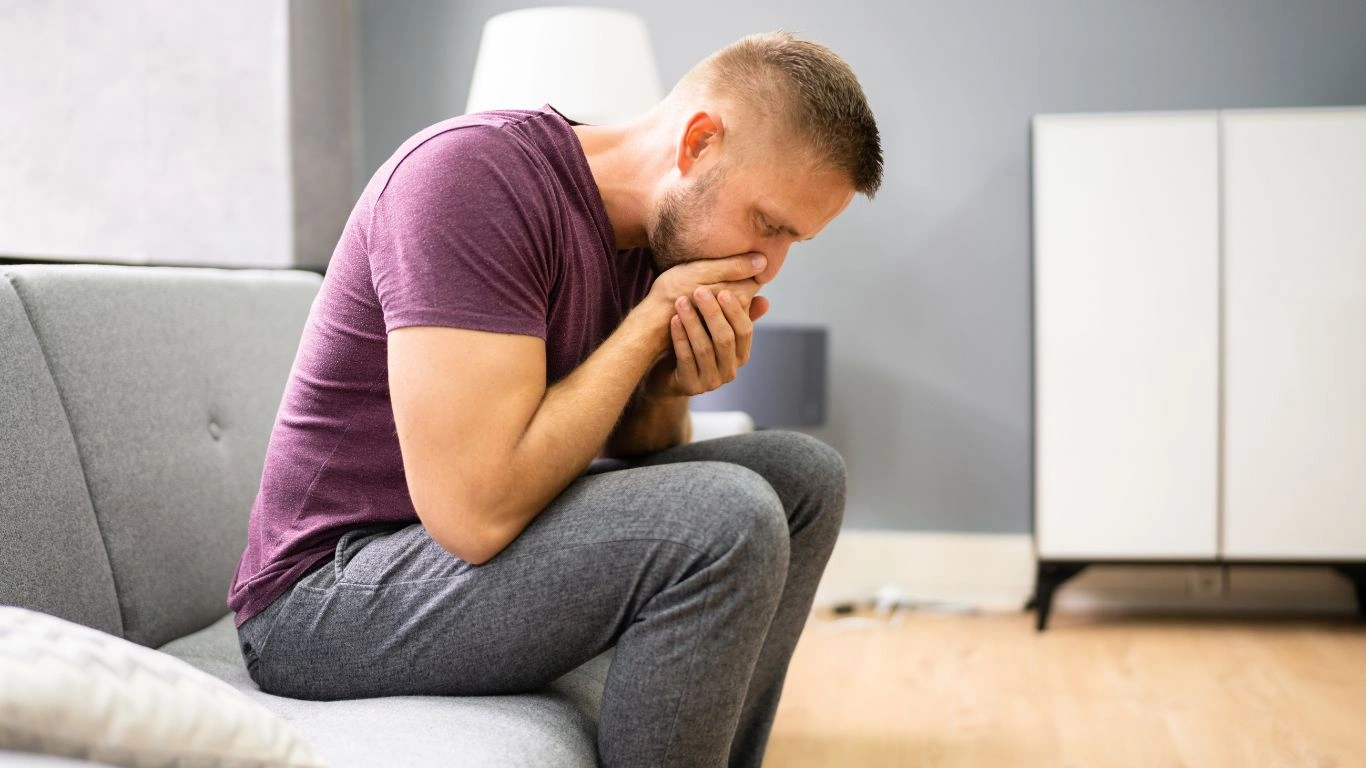GERD and Exercise Safety Tips: How to Stay Active Without Triggering Symptoms
If you’ve ever tried to push through a workout only to be hit with that familiar, burning discomfort mid-squat or halfway through your run—yeah, you’re not alone. GERD (Gastroesophageal Reflux Disease) has a sneaky way of showing up right when we’re trying to take care of ourselves. I’ve been there, thinking I could out-run reflux, literally. But managing GERD while staying active is absolutely doable—with a few tweaks and a whole lot of listening to your body.
Why Exercise Can Trigger GERD Symptoms

Working out ramps up intra-abdominal pressure, which can push stomach acid back into your esophagus—cue the burn. That’s especially true with exercises like crunches, heavy lifting, or high-impact cardio.
When I first started lifting weights again, I’d get halfway through a deadlift session before my chest would feel like it was on fire. Turns out, it’s not about skipping fitness—it’s about smarter movement choices.
Movements That Often Trigger Symptoms
- High-impact cardio like running or jumping
- Ab exercises (especially crunches and planks)
- Heavy lifting, especially overhead presses or squats with core engagement
- Yoga poses that involve deep twists or inversions
Some of these can still work for you—but with modifications, and often by timing meals more wisely.
Best Exercise Types for People with GERD

GERD doesn’t mean giving up exercise. In fact, regular physical activity may actually improve symptoms when done correctly.
GERD-Friendly Workouts
- Low-impact cardio: Walking, elliptical machines, or cycling at a moderate pace work wonders without jostling your stomach.
- Strength training with control: Bodyweight exercises, machines, and dumbbells—just avoid straining or breath-holding (Valsalva maneuver).
- Gentle yoga: Focus on restorative poses and light stretching. Avoid deep backbends and anything upside-down.
- Swimming: The horizontal posture may help reduce pressure on your stomach, just avoid overexertion or tight swimwear around the waist.
Honestly, walking became my go-to when reflux flared. It gets your heart rate up, supports digestion, and can be done right after meals if needed—just avoid hills right after eating!
Timing and Fueling: Your Secret Weapons

What and when you eat is just as important as how you move. A bad combo here can wreck even the most gentle routine.
Smart Pre-Workout Eating Tips
- Eat at least 1.5 to 2 hours before exercising
- Keep it light: Think oatmeal, a banana, or a small turkey sandwich on low-acid bread
- Skip known triggers like citrus, tomato, chocolate, garlic, caffeine, or anything greasy
Don’t underestimate hydration either—dehydration can aggravate GERD symptoms big time. Sip water throughout the day and aim to hydrate before, not during, your session.
Workout Plan for GERD Warriors

Here’s a simple weekly plan I’ve tested that won’t stir up symptoms—and still gets you results.
Sample Weekly GERD-Friendly Fitness Schedule
- Monday: 30-min brisk walk + light resistance band work
- Tuesday: Gentle yoga (avoid twists/inversions)
- Wednesday: Upper body strength (machines or light weights)
- Thursday: Rest or light stretching
- Friday: Swimming or stationary bike (30 minutes)
- Saturday: Core-focused strength (skip crunches—try bird-dogs or standing core work)
- Sunday: Nature walk or restorative yoga
Mix and match based on how you’re feeling that day—tuning in is key.
Gear and Clothes That Help More Than You’d Think

This one took me a while to learn the hard way: tight waistbands and restrictive sports bras can make GERD flare worse. Clothes that press into your midsection only intensify the reflux pressure.
Smart Clothing Choices
- Choose high-waisted but stretchy leggings or joggers
- Avoid tight belts or compression waistbands during workouts
- Opt for breathable, loose-fitting tops that allow easy movement and don’t ride up
I even keep a designated set of “GERD-friendly” workout clothes—just like you’d have gear for cold weather or yoga.
When to Take a Step Back

Even with the best plan, there are days when GERD just wins. And that’s okay.
If you’re experiencing severe reflux, dizziness, nausea, or chest pain that doesn’t feel like your usual symptoms, it’s smart to pause. It’s not about pushing through—it’s about adapting wisely.
Need more guidance on reshaping your daily habits to support long-term relief? Here’s a helpful, deeper dive into GERD lifestyle changes that actually work.
Breathing, Posture, and the GERD Connection

You’ve probably heard this before, but it bears repeating: how you breathe and carry your body during exercise makes a huge difference with GERD. I used to slouch through seated dumbbell curls, wondering why I kept feeling a slow burn creeping up my chest. Turns out, posture and breath were my hidden culprits.
Why Breathing Matters
- Shallow breathing can increase abdominal pressure, especially during strength training.
- Holding your breath (like during a heavy lift) can trigger the Valsalva maneuver and spike intra-abdominal pressure.
Better Breathing Habits
- Practice diaphragmatic breathing—inhale through the nose, feel your belly expand.
- Exhale on effort—don’t hold your breath during exertion (e.g., exhale as you lift).
- Try incorporating GERD-friendly breathing techniques to prep your core before movement.
Posture Tips During Movement
- Keep your spine neutral during strength exercises—don’t over-arch or hunch.
- Use mirrors or video yourself for feedback (super helpful, especially for deadlifts and rows).
- Standing movements tend to be gentler than lying down postures for GERD sufferers.
I also started integrating light mobility warmups before working out, and wow, what a difference. Try cat-cows, hip openers, and shoulder rolls to get your body aligned.
Exercises and Intensity Levels to Rethink

Not every form of fitness plays nice with GERD, especially when symptoms are active. And some popular routines—like fasted HIIT or weighted core circuits—can be downright miserable.
Common Triggers to Adjust or Avoid
- Planks: Especially extended holds—pressure + horizontal positioning = bad mix.
- Crunches/sit-ups: These compress the abdomen hard.
- Box jumps: All that jostling can trigger acid backflow.
- Overhead pressing: Lifting while tensing the core can elevate symptoms.
- HIIT training: The combo of effort, pace, and breath-holding can spark reflux episodes fast.
If you’re set on core work, try standing core movements (woodchops, cable twists), or go for bird-dogs and dead bugs instead of crunches.
Supplementing Smartly (Or Not at All)

Fitness culture pushes supplements hard—but many of them are troublemakers for reflux. I learned that the hard way after choking down a pre-workout mix that felt like drinking battery acid an hour later.
Supplements That May Trigger GERD
- Caffeine-heavy pre-workouts
- Creatine with artificial sweeteners
- Protein powders made with dairy or acidic flavorings
- Fish oil capsules taken on an empty stomach
GERD-Safe Choices
- Unflavored or natural protein powders (plant-based tends to be easier)
- Electrolytes without citrus acids or carbonation
- Gentle magnesium or digestive enzyme blends if approved by your healthcare provider
Bottom line? Don’t over-supplement. Whole foods > powders and pills when you’re managing GERD.
Combining Fitness with Lasting GERD Relief

Success with GERD and exercise is less about restriction and more about understanding your body’s limits. It’s taken me trial, error, and a few reflux-fueled meltdowns to realize I could stay strong and symptom-free at the same time.
Helpful Tips That Work Long-Term
- Track symptoms: Keep a fitness + GERD journal to spot patterns (food, time of day, exercises).
- Elevate after workouts: Stay upright for 30-60 minutes post-exercise to let digestion settle.
- Recovery matters: Lack of sleep and high stress can worsen GERD symptoms, undoing your hard work.
- Layer in lifestyle tools: Check out the full GERD lifestyle changes guide to complete your game plan.
And don’t forget: You’re allowed to go slow. What worked for your fit friend might not work for you. But that doesn’t mean you can’t move, build strength, and feel incredible—without the burn.
Need deeper strategy around GERD + workouts? Explore our focused guide on preventing reflux during exercise.

Camellia Wulansari is a dedicated Medical Assistant at a local clinic and a passionate health writer at Healthusias.com. With years of hands-on experience in patient care and a deep interest in preventive medicine, she bridges the gap between clinical knowledge and accessible health information. Camellia specializes in writing about digestive health, chronic conditions like GERD and hypertension, respiratory issues, and autoimmune diseases, aiming to empower readers with practical, easy-to-understand insights. When she’s not assisting patients or writing, you’ll find her enjoying quiet mornings with coffee and a medical journal in hand—or jamming to her favorite metal band, Lamb of God.






